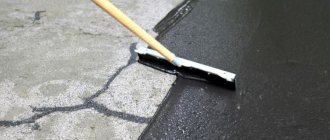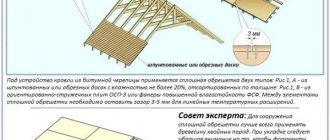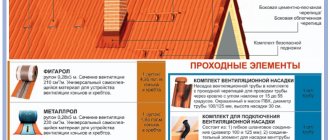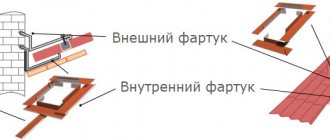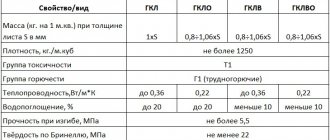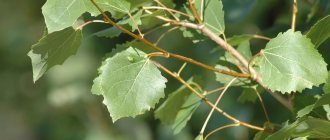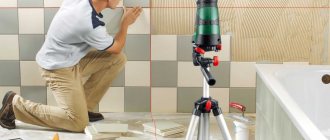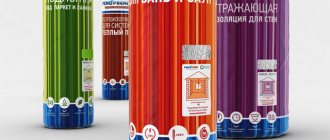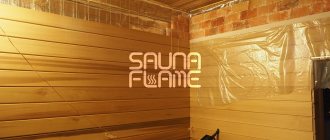Hello, dear friends!
I don’t know about you, but in my distant childhood, together with the same ten-year-old blockheads, walking near construction sites, I happily chewed cooled bitumen resin that stuck to the barrels in which it was heated. Why? Because it looked like chewing gum, which was in short supply at that time (especially if dipped in sugar), and there weren’t enough brains...
Bitumen, popularly known as tar, for a considerable time was the main material for waterproofing many building structures, from foundations and roofs to concrete storm drains, pipes and other communications. The main ingredient is oil. It was cheap, so the material was cheap. However, there was a drawback. At low temperatures, bitumen cracked, and in the summer heat it melted. Therefore, over time, more reliable and durable varieties of this material appeared. Today I’ll tell you about one of them. Here’s a topic for you: rubber-bitumen mastic and places of its application in construction...
It contains a plasticizer - finely dispersed rubber (not to be confused with plasticizers for concrete), as well as mineral additives based on asbestos, lime, crushed quartz, basalt wool and other things. They eliminate (or minimize) two main disadvantages of conventional bitumen.
First: at high temperatures it does not flow, that is, there is excellent plasticity, but there is no particular ductility. Second: there is no formation of cracks at low temperatures. Agree, this is important for the diverse climate of our country. In addition, to protect against rust (when coating metal structures), anti-corrosion inhibitors are added to the mixture.
What is bitumen mastic
This is modified petroleum bitumen in its pure form, to which additives for various purposes have been added. It is the latter that smooth out some of the negative aspects of this waterproofing material. For example, its high fluidity or cracking at low temperatures.
In appearance, roofing mastic is a pasty substance of black color, highly saturated. This is a ready-made roofing material that does not need to be diluted or heated with anything. The main requirement is to use at positive temperatures.
Bitumen mastic - black paste Source alfakrov.com
Consequences of untimely care
Violation of the integrity of the body surface is fraught with unpleasant moments - cracks, the appearance of pockets of corrosion. There are many reasons for this. The main factors are operating the vehicle in adverse weather conditions, with sharp temperature fluctuations.
All these misfortunes can be avoided if the bottom is treated in a timely manner. Body mastic is a substance of viscous consistency and insufficient fluidity. Therefore, the work should be carried out carefully, working through even the most inaccessible places.
If you need body repair in Minsk, go to the TAM.BY catalog
Where and how to use it
Since we are talking about the roofing option, we therefore use it on roofs. There are three use cases here:
- on flat roofs as waterproofing and adhesive composition for soft roofs (roofing felt, glass hydroisol and others);
- on pitched roofs as an adhesive during the process of covering some areas with bituminous shingles;
- as a roofing covering if rubber, rubber or latex are added to the mastic.
As for the application method, there are no complex variations here. To do this, use paint rollers, brushes or spatulas. To completely cover the roof plane, special equipment is used that supplies the roofing bitumen coating under pressure, for which the equipment includes an air compressor.
Mastic is used to create roofing. Source propodval.ru
See also: Contacts of construction companies that offer roofing services of any complexity.
Methods of use
Bitumen rubber mastic, which you can buy on our website, is easy to apply; cold mastics are used at positive temperatures or at temperatures not lower than -5°C. Before use, the mastic is mixed. Open fire should not be used as this may cause the solvent to ignite. Before applying the mastic, the surface is cleaned of dust, dirt and traces of grease. For hot mastics (MBR-65, MBR-75), heating to 160-180°C is required with stirring until a homogeneous mass is formed. To improve the absorption of the mastic, you can use a preliminary application of a primer. In the case of the MBR 90 composition, heating before use is possible even with the use of open fire, since there are no flammable elements.
Main advantages
We must pay tribute to bitumen mastic for roof waterproofing for its characteristics. It was they who determined the popularity of this material. Its advantages include the following characteristics:
- high elasticity, which allows the applied layer to stretch at high temperatures without tearing, and at low temperatures not to shrink much;
- high tensile strength, this allows you not to worry that the coating at the junction with other planes (for example, with a protruding pipe on the roof) will separate or tear due to temperature changes or light mechanical loads;
- long-term operation, which corresponds to the service life of the same soft rabbit, and this is within 15-25 years;
- low price compared to other types of waterproofing materials and adhesives;
- high resistance to aggressive environments and natural loads;
- ease of application on the surfaces of various building materials;
- the latest types of mastic do not even require cleaning the surface from rust, paint and other contaminants;
- in its pure form, mastic applied to the roof structure, even in 2-3 layers, will be much easier than installing the same soft roof;
- ease of repair of a roof covered with roofing mastic;
- viscosity, which determines the thickness of the applied coating, that is, the layer is not applied too thin.
Easy to apply to roofs of buildings Source ms.decorexpro.com
And as for the disadvantages. There are few of them, but they are there:
- Weather conditions affect the ability to use this bitumen material.
- It is almost impossible to control the thickness of the layer being laid.
- If there are a large number of defects on the surface being poured, for example, bumps, protrusions, pits, then such a surface must be well prepared, smoothing out all the defects, or the thickness of the mastic layer must be increased, that is, the material consumption must be increased, thereby smoothing out the unevenness of the roofing surface being treated.
Overcoming external negative factors
Thanks to the introduction of modern technologies, consumers are receiving cars equipped with high-quality protection made from durable fiberglass or polymer materials. The metal is also subjected to the application of layers of galvanization or high-quality primer, or preferably several layers at the same time.
Products of the domestic automobile industry are often deprived of such privileges. Even normal operation can shorten the life of machines without additional self-protection. All vehicles whose storage and operating conditions are associated with dampness or excess moisture are at risk:
- in open street storage;
- in a garage with an inspection hole;
- in premises built next to close groundwater, etc.
You need to know that corrosion processes develop quite quickly and, under favorable conditions, can render even an expensive car unusable in just a few months. Drivers who care about their vehicles must carry out diagnostics and special treatment at least annually. You can do this yourself.
You can treat the underbody of the car with the composition yourself, using an inspection hole or a lift.
When conducting a purchase and sale transaction, buyers and specialists pay special attention to the condition of the lower part of the car body. If it is a sieve of pockets of corrosion, then we do not recommend buying such cars, since restoration will require a lot of effort and money. Otherwise, it will rot in a short time.
Need for processing
Mastic is used for cars - arches and bottom - as an anti-corrosion treatment due to the following factors:
- The lower surface of the car is exposed to natural sandblasting phenomena when small stones, crushed asphalt or other hard elements destroying the bottom hit the car. Negatives also include exposure to snow, ice, road reagents (including rock salt), and acid precipitation. With such bombardment, the paint peels off and microcracks form. Moisture through them can reach unprotected surfaces.
- Domestic budget-class cars are not subject to a protective procedure that involves the use of bitumen mastic for cars. In this regard, such an operation is mandatory for most VAZ products. If the metal has been anodized or galvanized, then such cars receive protection for 3-5 years.
- During the operation of a car, processes such as metal fatigue occur. It reduces the strength characteristics of the product. The catalysts for the process are pockets of corrosion and oxidation. This should not be allowed, since the bottom of the car acts as passive protection for everyone inside the vehicle.
- Restoring metal on a car underbody is a fairly expensive procedure. Timely installation of protection or treatment will cost less.
VIDEO: Main road - protective mastic for cars
Material classifier
You can save money and achieve the desired result by treating the surface yourself. At the same time, you need to know that, for example, rubber-bitumen mastic for cars is often used, which can last for more than one year.
Manufacturers offer two main types of material:
- wax-based mixtures;
- compositions using bitumen.
The compositions are also differentiated by type of application: for hidden or open surfaces.
In the first case, it is typical to use non-drying materials that are in a permanent liquid-viscous state. Thanks to this, they easily penetrate into the cracks formed, blocking the entry of moisture there.
The viscous structure allows you to penetrate into all the pores and cracks of the bottom
Also, for hidden cavities, car enthusiasts will benefit from a car paraffin mixture prepared at the factory with wax. With this treatment, the surface is covered with a thin layer of film that protects the metal from water. There is a fairly wide temperature range at which the film remains elastic.
In the second case, bitumen mastic, consisting of bitumen itself and synthetic oils, is often used for the outer sections of the bottom. Due to it, the surface can be protected not only from moisture, but also from the aggressive mechanical impact of stones and other foreign particles. Its layer can vary from a quarter to half a millimeter.
An alternative to bitumen or polymer-bitumen products is rubber. The material forms a strong layer with a durable coating. Its application requires special conditions.
Bitumen-rubber mastic for cars
An additional cosmetic product is liquid plastic. It is relevant in the form of additional cosmetic protection on top of acrylic.
For open surfaces, rust begins to develop from mechanical damage, and in closed cavities problems appear due to condensation formed due to lack of ventilation.
Internal cavities important for processing include:
- threshold cavities;
- space inside the doors;
- area inside the wings;
- body pillars.
You can get to everyone through certain technological openings. In some designs they are located inside the cabin; sometimes holes are drilled to pump in anti-corrosion agents, and then they are plugged after use.
Types of mastic compositions
There are 3 main types on the Russian market:
- rubber-bitumen;
- bitumen-polymer;
- epoxy.
Types of bitumen mastics for roofing
In principle, the proposed classification is conditional. It has three positions:
- Cold roof mastic This is a ready-to-use material. If there is a need for the composition to become more liquid, then it is diluted with solvents. But it should be noted that the mastic may not remain in a diluted state for long. It quickly pushes out any liquid, becoming viscous again. Therefore, the diluted mass must be used immediately. If the temperature outside is close to zero degrees, then the mastic mass must be heated to a temperature of +30 or +40C before using it on the roof.
Bituminous mastic for cold application Source ms.decorexpro.com
Areas of application
The composition contains no substances harmful to humans. It can be safely used in residential buildings.
Bitumen mastics with rubber crumbs are used to protect against leaks, isolate from moisture and protect various structures made of wood and metal from corrosion.
For this purpose it is processed:
- roofs of buildings;
- loggias and balconies;
- bathrooms, basements and swimming pools;
- concrete foundations and wooden beams;
- pipelines;
- steel containers.
The material is also used to:
- protect car bodies and agricultural machinery from corrosion;
- make the bottom of the car more impact-resistant;
- glue and fasten wooden and porous surfaces, hermetically fill cracks, chips and seams;
- repair road and airfield surfaces.
MBRs are also used when laying asphalt sheets and installing roll roofs.
Bitumen-rubber mastic can be used when the ambient temperature is not lower than -20 and not higher than +40 degrees. If the temperature is below +5, the material can be used only after it has been warm for at least one day.
Rules for applying bitumen mastic to the roof
We will not consider here how bitumen waterproofing mastic is used for roofing when laying soft roofing or flexible tiles. These technologies are simple because the material is simply applied to the surface with a spatula, roller or brushes. A more complex process is creating a roofing covering using the mastic itself. We'll tell you about this.
First of all, it should be noted that bitumen mastic is laid on the surface of flat roofs after cleaning the latter. Therefore, if reconstruction is carried out, that is, replacing the old covering with a new one, then it is necessary to completely tear off the old roof, remove the old adhesive composition by any means to the concrete surface of the ceiling. The latter is cleared of debris, dusted and treated with a bitumen primer.
Roof treatment with bitumen primer Source an-maximum.ru
Now to the question of how many layers should be used when applying mastic.
- If the roof slope does not exceed 10°, then three layers are laid, each of which must be dried before laying the next one. In this case, a reinforcing fiberglass mesh must be placed between the layers. The last freshly laid layer can be filled with fine crushed stone or gravel.
- If the angle of inclination of the roof slope is in the range of 10-20°, then two layers are laid with one reinforcing layer between them. The top of a bitumen roof can be painted.
- If the angle of inclination exceeds 20°, then apply a single-layer coating with a thickness of at least 3 mm, which is covered with paint on top. Although experts recommend not reducing the number of layers to less than two.
The thickness of the applied bitumen layers should not be less than 1 mm. The material itself is applied either by pouring, when the mastic is poured and distributed over the surface to be treated with mops and scrapers, or by spraying under pressure. The first option is considered expendable, because it is difficult to level layers of a certain thickness. By the way, it should be noted that the average consumption of bitumen mastic on rabbits is 1.5 kg/m².
And a few words about the price of bitumen mastic. Of all the brands offered, the cheapest is bitumen-polymer mastic (MBM). One bucket weighing 16 kg costs between 900-1000 rubles. Bitumen-rubber mastic costs from 2000 rubles per bucket weighing 20 kg.
Main producers
Descartes, KhimTorgProekt and TechnoNIKOL are the most famous manufacturers of these products. They have been on the domestic market for more than two decades and have a good reputation.
TechnoNIKOL
AquaMast and TechnoNIKOL 20 are the two most famous brands of mastics with rubber crumbs produced by the TechnoNIKOL company.
After purchase, they can either be used in a ready-made “cold” form or diluted with organic solvents.
Mastics of the AquaMast and TechnoNIKOL 20 brands are sold in metal cans and buckets with a capacity of 3–20 kg. Their price is in the range of 40-70 rubles per liter.
Descartes
The Descartes company produces bitumen-rubber mastic under the Expert brand. You can use it immediately after purchase.
Product price is approximately:
- 170-200 rub. per can of 1.8 kg;
- 1400-1600 rub. for an 18 kg bucket.
KhimTorgProekt
The KhimTorgProekt company produces a whole range of different bitumen mastics with different technical characteristics, including MBR 65, 75, 90, 100, which must be heated before use.
KhimTorgProekt's cold formulations are sold under the Bitumast brand.
Products are packaged in buckets and cans with a capacity of 3 to 20 liters.
The price of MBR 65, 75, 90, 100 fluctuates around 70-100 rubles per 1 kg .
Types of products
Cold mastics are classified in the same way as hot materials. They are divided into classes according to composition. Moreover, only the main component is taken into account during separation.
Currently, there are several main types of this material:
- bitumen;
- bitumen-latex;
- bitumen-rubber;
- bitumen-kukersol;
- bitumen-rubber;
- bitumen-oil.
The classification of bitumen-based materials according to such a parameter as functional predisposition is extremely rarely taken into account. This is due to the fact that any type of bitumen mastic can be used for almost any job.
If we talk in more detail about bitumen-latex mastic, the main advantage is the following: it is equally suitable for insulating surfaces and for ensuring reliable protection of the roofing sheet . The same applies to all other materials. Among the variety of mastics, materials made on the basis of kukersol varnish stand out.
The peculiarity of these materials lies in the effectiveness of their use in insulating concrete coverings and foundations. But to protect roofing coatings because they are expensive. Other types of bitumen solutions are more effective in terms of insulation and are affordable.
Alternative manufacturing methods
The many options for homemade sandblasting are determined by the needs of the owners and the different materials available. You can make your own effective installation using products intended for other work. For example, a high-pressure washer unit will help you assemble a dust-free sandblasting machine with your own hands. Below are several working and effective options for homemade installations.
From a pressure washer
You can assemble a sandblaster from Karcher. This car wash creates high water pressure with low water flow. To obtain an efficiently operating dust-free installation, you just need to assemble a special nozzle for the outlet tube. Required:
- a self-made or store-bought ceramic nozzle;
- reinforced hose;
- mixing block, a tee with a suitable fit diameter is suitable;
- feed adjustment unit, cylindrical type dispenser;
- a tube for collecting abrasive, equipped with an air supply path into a closed container with sand or other material.
Water sandblasting from Karcher operates on an ejector circuit. High-pressure water passing through the mixing unit at high speed creates a vacuum in the abrasive supply path. Sand flows in and out with high pressure fluid.
The water sandblaster of this design has some features.
- The flow intensity is high with low water flow. This allows the installation to be used for glass, frosting or other processing.
- For stable feeding, an abrasive of uniform dispersion and small fraction must be used. For domestic use, fine, sifted river sand is suitable.
From a blow gun
Small and efficient - this is how sandblasting from a blow gun can be described. This device will allow you to carry out, for example, body work with fairly high efficiency. However, the performance depends entirely on the compressor used. To assemble the device you will need:
- ready-made pneumatic blow gun;
- plumbing tee;
- ball valve for adjusting the abrasive supply;
- outlet nozzle with clamping nut.
The design is not complicated. How to assemble it can be seen in the next photo.
Either a lightweight powder fire extinguisher bottle or a plastic bottle can be used as a container for abrasive.
Using a spray gun
You can create a homemade sandblast using a spray gun. For this you will need:
- mixing valve from a conventional spray gun;
- handle with air supply mechanism for the spray gun;
- bottle for abrasive mixture:
- tee;
- ball valve regulator.
The operation diagram of the finished device is as follows:
To assemble the structure you will need:
- sharpen the spray gun to use a nozzle of the required dimensions;
- attach the mixing tee to the gun;
- install and secure the supply and circulation hoses.
Compound
Mastic consists of bitumen and granular minerals. The exact chemical composition according to GOST depends on the type and scope of use. As a result, even waterproofing is produced - a dense insulating material.
Various ingredients, such as mineral filler, petroleum products, resin, plasticizer, crumb rubber and additives, guarantee specific properties to the final product. Oil products can be used to insulate oil and gas pipelines.
The composition consists of a bitumen binder material and granular asphalt concrete particles with a diameter of no more than 2 mm, and they make up 50% of the total composition. Based on the weight of aggregates and crushed granular asphalt, the diameter of which does not exceed 2 mm, the binder component contains recirculation, and its amount is at least 15% by weight.
Due to the fact that the composition has a shear modulus of no more than 2 thousand MPa at -10 C and a frequency of 1 Hz, it can be reused. It has the same characteristics as the above prepared composition. Can be used as a filler for road surfaces. It has been found that it is possible to produce a combination of fine granular asphalt elements and bitumen binder that has similar properties to the freshly prepared types.
Physical and mechanical properties are similar.
The material may contain the following oils:
- vegetable;
- soy;
- sunflower;
- rapeseed;
- corn;
- peanut;
- olive;
- coconut;
- Palm;
- palm kernel.
Receipt method includes:
- providing a solid material containing regenerated granular particles that have a maximum diameter of not more than 2 mm and recycled bitumen;
- obtaining fresh bitumen and rejuvenating agent (optional);
- mixing the solid material with fresh bitumen to produce a mixture containing regenerated particulate matter and a binder consisting of a recycle component and a rejuvenating agent (optional);
- extracting a mixture in which bitumen ranges from 15 to 75%.
